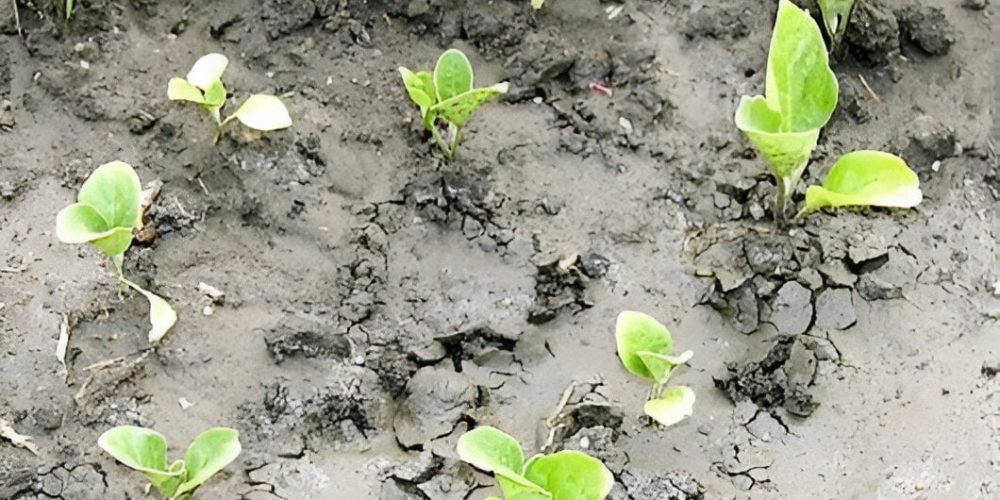The borer (Haloush) in zucchini
- The scientific name : Gryllotalpa gryllotalpa
- the family : Orthoptera
- Symptoms of the disease :
- The adults and nymphs attack the roots of plants and feed on them, leading to yellowing of the plants and the death of the seedlings.
- The insect digs and attacks the fruits and seeds before they germinate, and loose piles appear on the surface of the soil.
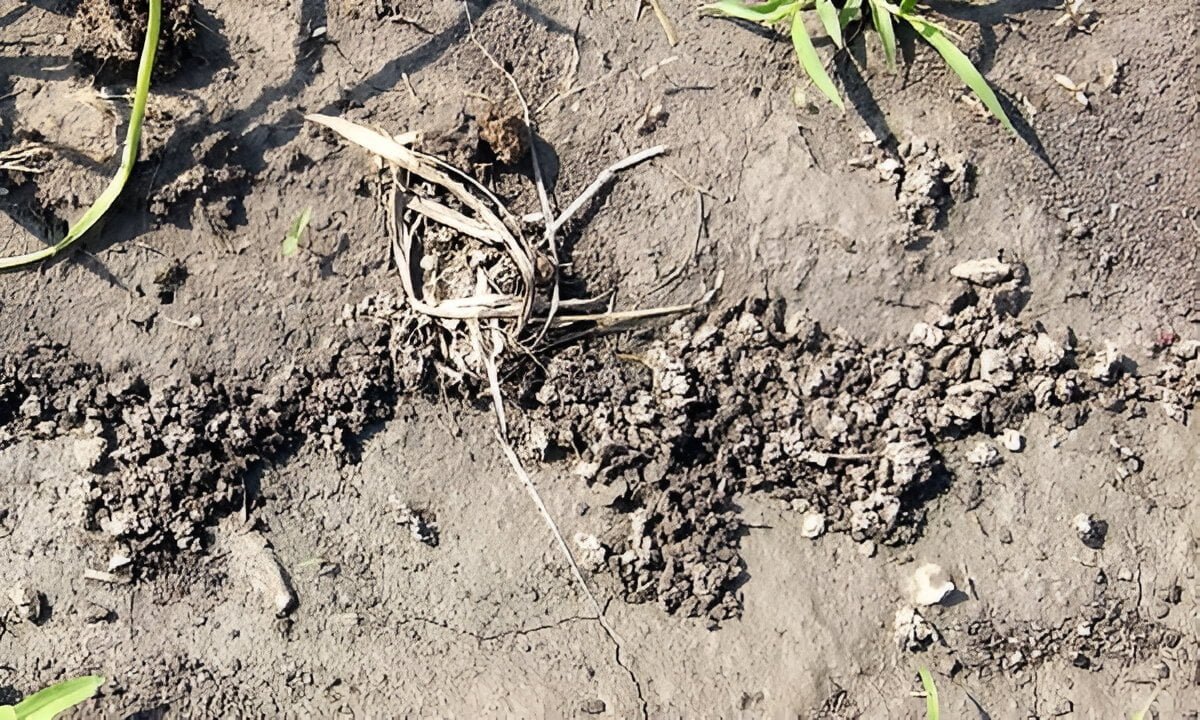
A picture showing you the symptoms of the borer (Haloush) in zucchini
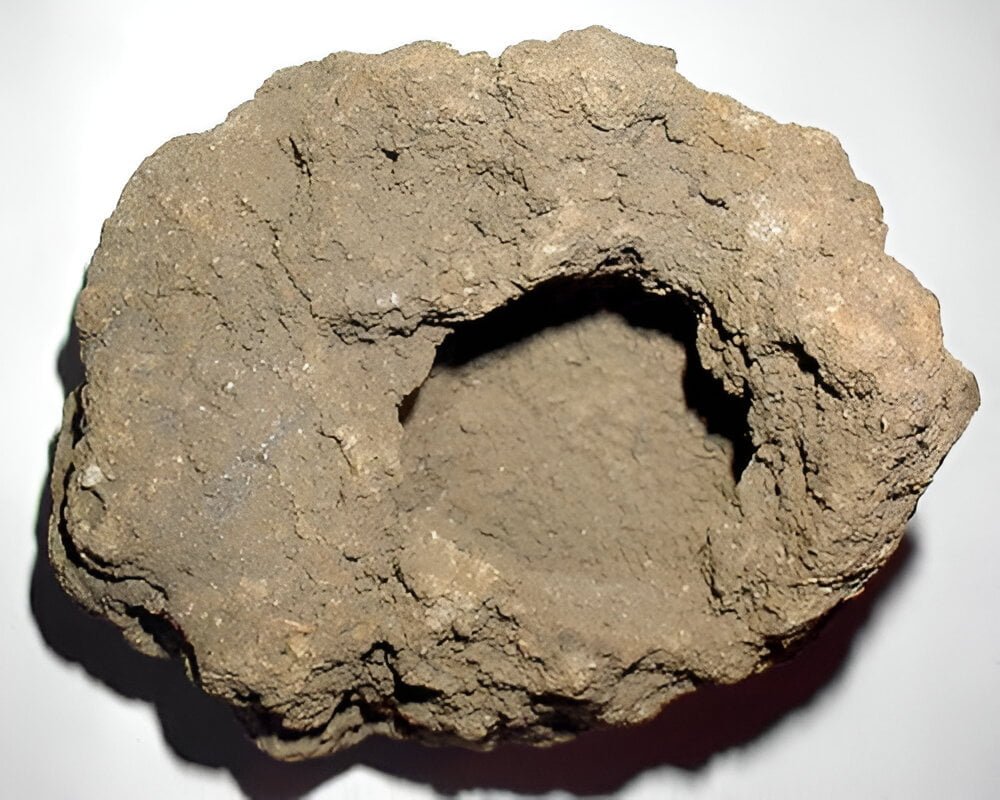
A picture shows you the size of the tunnel
Description of the insect:
A medium to large insect, up to 5 cm long, in a yellowish-brown color. The front wings are short and do not cover the body, and are triangular in shape.
The anal horns are long, the front pair of legs are designed for digging
- It has greatly enlarged front legs with finger-like ridges; Its body is strong and covered with a velvety layer of soft hair.
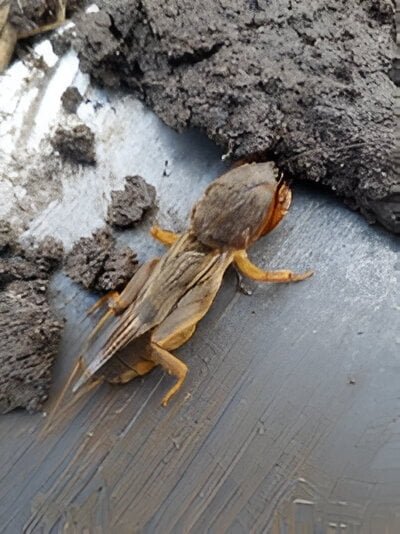
A picture showing you what a complete (adult) insect looks like.
- Causes of borer (haloush) in zucchini:
- Farmers increase the amount of irrigation water in the zucchini cultivation soil (which is the most important reason of all because the haloush loves and loves water), and this leads to the plant becoming weaker in the face of this insect.
The farmer does not care about the vegetation cover used to protect crops and zucchini fields (planting forest trees and fences around fields of crops such as cypress and pine), and this contributes to the spread of pests from the fields to his crops.
– There are no windbreaks around zucchini vegetable fields
- The presence of the zucchini cultivation field in a place that is more susceptible to haloush infection (a coastal area, a heavily irrigated Ghouta area, an area next to a river).
The presence of other pests in the field, the most important of which is the zucchini fruit worm.
- Do not plant zucchini at appropriate distances (which are 60 cm between one plant and another and 70 cm between the lines).
The farmer’s neglect of deep plowing before planting zucchini encourages the infection of haloush (as plowing must be done to a depth of 35 cm).
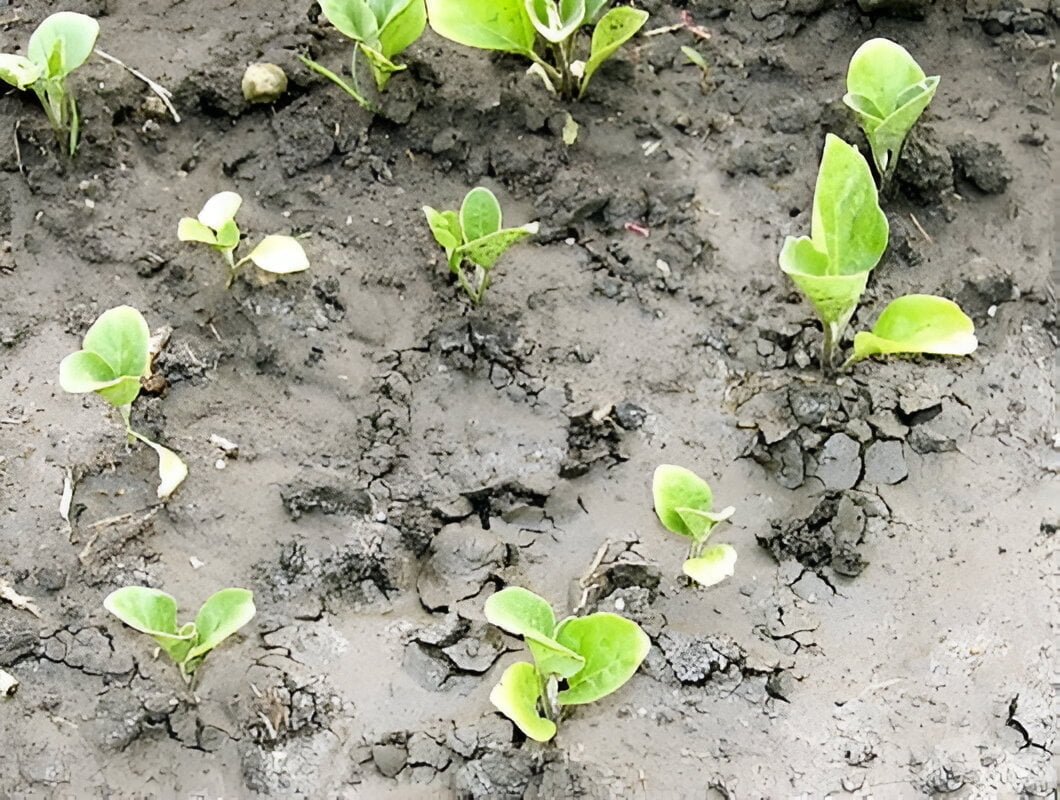
A picture showing you soil moisture and the tunnels formed by the pest
- Suitable conditions for the spread of the borer (haloush) in zucchini:
- -Deep, moist soil, spreads at soil edges and seeps.
- The presence of neighboring crops infected with other pests.
- The presence of harmful weeds in the field.
- The development cycle of the borer (haloush) in zucchini:
- It lives mainly in the ground where it feeds on soil invertebrates (such as earthworms and insect larvae) and on plant roots. They are usually of little or no importance as a pest and are only a problem if they occur in large numbers.
- They dig holes in the soil and form tunnels a few centimeters below the surface. At night, especially on warm summer evenings, adults may rise to the surface.
- After mating, females form a large underground chamber in which they lay 100-300 eggs. The eggs hatch within 2-3 weeks, but the female continues to care for her brood until the nymphs reach the second instar. The nymphs are then left to feed and develop independently. Development from egg to adult takes about a year to 18 months, depending on the cold.
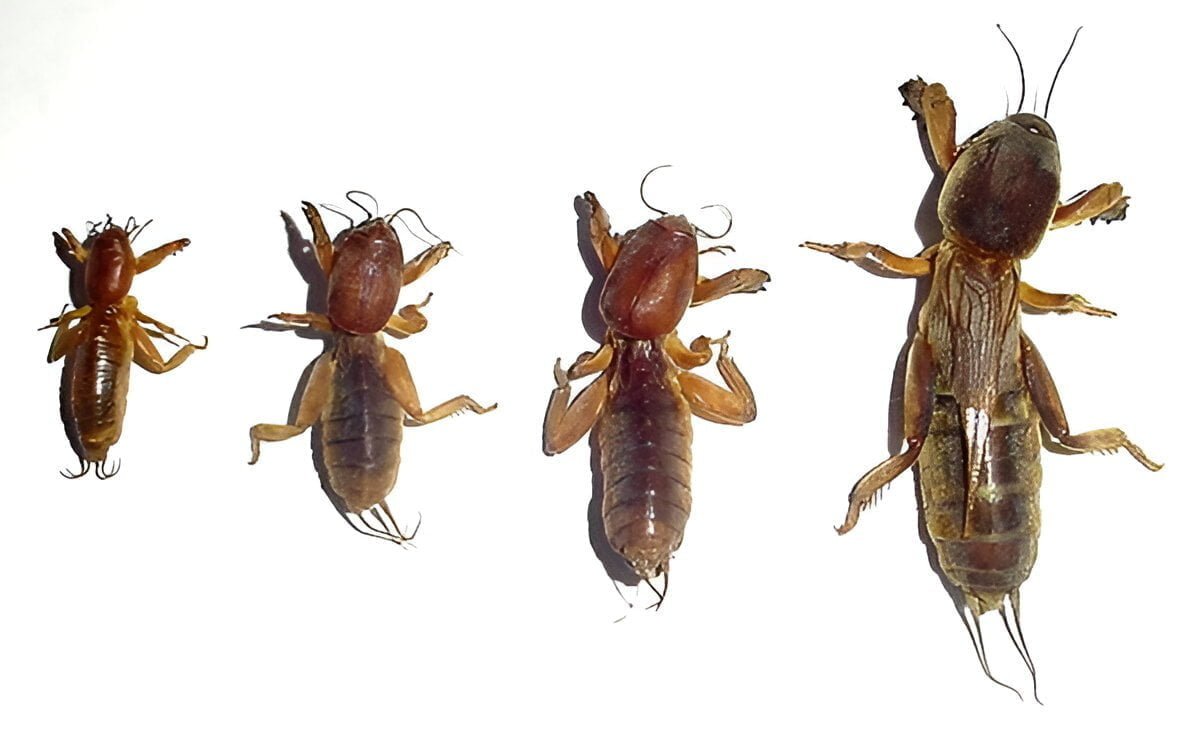
A picture showing you the evolution of an insect
- Losses from the spread of the borer (haloush) in zucchini
- Destruction of seedlings and young plants may wither and die.
- The danger of haloush to zucchini lies in the damage reaching more than 20% of the crop, and it may also reach 50-60% depending on the severity of the infestation.
- Control strategy
- Preventive measures to prevent the occurrence of the borer (haloush) in zucchini
- Monitoring zucchini fields and places of cultivation periodically in batches, the first in April or March, the second in July and August, and the third in September and October.
- Monitor the leaves and fruits close to the soil surface on zucchini plants systematically and regularly daily, and record any obvious injuries from eaten areas or pale yellow parts.
- Avoid taking any ill-considered measures in zucchini fields, such as using pesticides without consulting.
- Agricultural operations, such as cultivation, hoeing, removing crop residues, and leveling the soil, eliminate large numbers of the pest.
- Regular irrigation and weed removal.
- Trim excess and tangled branches, as they are often susceptible to infection, and remove any branches of the zucchini plant that are close to the surface of the soil. However, keeping the fruiting parts completely unpruned because it is the economic unit
- Chemical and organic control recommendations against the borer (haloush) in zucchini
- Organic control: Light or pheromone traps can be used to attract the insect and trap the pest. The traps are distributed between the zucchini lines to catch this worm (this also contributes to getting rid of the zucchini fruit worm).
- It is also possible to use ready-made toxic baits in agricultural pharmacies, where the toxic bait is spread in an amount of 5 kg/dunum in the zucchini planting lines, and this is done about two weeks before transplanting or planting.
- By using predators such as some types of beetles, cats, and rats, they significantly reduce their numbers.
- Chemical control: The pesticide Parathion methyl, or the pesticide Fenitrothion or Parathion methyl, is used by spraying zucchini leaves affected by haloush.
- The soil around the zucchini planting lines can also be fumigated with the pesticide powder Diazinon or Endosulfan, mixing the pesticide well with the soil.
- Or use a mixture of corn grits with the pesticide BHC 1% as an active ingredient and spray the zucchini leaves and branches close to the soil surface.
- References
- Howard, Daniel R., and Peggy S. M. Hill. “Morphology and calling song characteristics in Gryllotalpa major Saussure (Orthoptera: Gryllotalpidae).” Journal of Orthoptera Research 15.1 (2006): 53-57
- SÖNMEZ, Emine, et al. Isolation, characterization and virulence of entomopathogenic fungi from Gryllotalpa gryllotalpa (Orthoptera: Gryllotalpidae). Applied entomology and zoology, 2016, 51: 213-223.
- Haes, EC M & Marshall, JA (1988) Grasshoppers and Allied Insects of Great Britain and Ireland. Harley Books, Colchester.
- , ECM & Harding, PT (1997) Atlas of grasshoppers, crickets and allied insects in Britain and Ireland. HMSO, London
- Biodiversity: The UK Steering Group Report. (1995)Volume 2: Action Plans. HMSO, London.
Pinchen, B. J. (in press). The Mole Cricket – From beyond the Theater.
Links:
https://link.springer.com/article/10.1007/s13355-015-0390-3
https://www.koppert.com/challenges/pest-control/crickets/european-mole-cricket/#life-cycle



